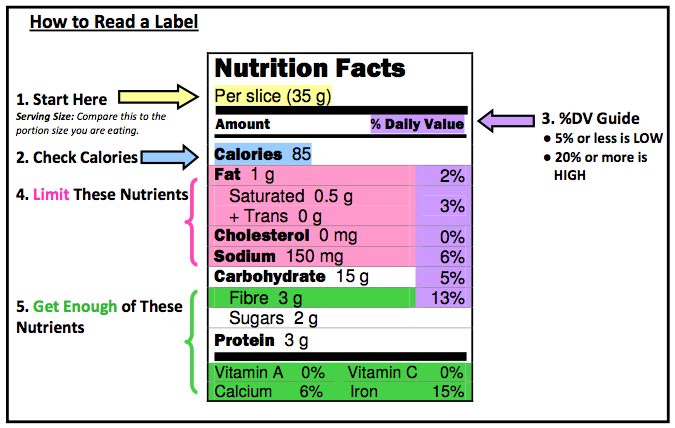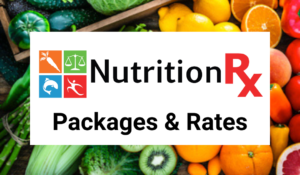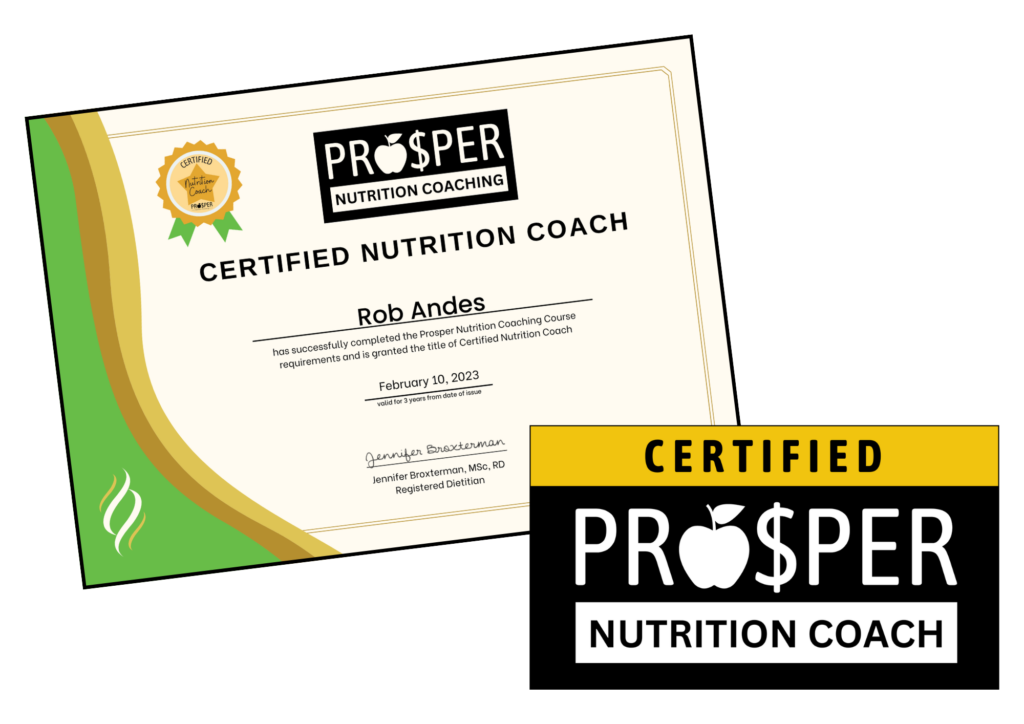

Label Reading 101
Written By: Jennifer Broxterman, BScH Foods & Nutrition
Registered Dietitian & Sports Nutritionist
NutritionRx Website: www.nutritionrx.ca
Email: info@nutritionrx.ca
All food packages in Canada contain a Nutrition Facts table to help consumers better understand what exactly is in the food they are eating. By law, all packaged foods must display a Nutrition Facts table that lists calories as well as 13 core nutrients: fat, saturated fat, trans fat, cholesterol, sodium, carbohydrate, fibre, sugars, protein, vitamin A, vitamin C, calcium, and iron. This month we’ll review the basics of reading a nutrition label to help you compare similar products and make the healthiest choice possible!
Nutrition Facts Table: The Basics
- Use it to help make informed choices about food
- Compare similar products more easily
- Determine nutritional value of foods
- Better manage special diets
- Increase or decrease your intake of a particular nutrient
Foods Exempt from the Nutrition Labelling Requirements
- Fresh fruit and vegetables
- Raw meat and poultry, except when ground
- Raw fish and seafood
- Foods prepared or processed at the store or bakery
- Foods that contain few nutrients such as coffee, tea, herbs, and spices
- Alcoholic beverages
How to Read a Label
Follow the step-by-step directions in the picture below to make your way through fully reading a Nutrition Facts label.
What Does it All Mean?
1. SERVING SIZE: Serving size represents the specific amount of food that has been used to calculate the calories and nutrient values on the Nutrition Facts label. When reading a label, look at the specific serving size and compare it to how much you actually eat. When you are comparing two similar food products, make sure the serving sizes are the same to make a fair comparison.
2. CALORIES: Calories represent the amount of energy found in a food, according to the serving size on the label. Portion size influences the number of calories consumed. For example, if the Nutrition Facts label has information based on one slice of bread but you consume two slices in a sandwich, you will need to double the calories and amount of nutrients listed in order to calculate your actual intake. Your caloric needs vary depending on your age, body size, gender, activity level, and whether you are pregnant or breastfeeding.
3. % DAILY VALUE (%DV): The %DV tells you if there is a little or a lot of a nutrient in a particular food. The %DV can help you quickly identify the strengths and weakness of a food to help you increase your intake of healthy nutrients (e.g. fibre, vitamins A & C, calcium, and iron) or decrease your intake of certain nutrients (e.g. saturated and trans fat, sodium, and cholesterol). The %DVs are based on standards established for healthy growth and development and a reduced risk of nutrition-related disease.
4. LIMIT THESE NUTRIENTS:
- FAT: The total amount of fat listed consists of four subtypes of fat: saturated fat, trans fat, monounsaturated fat, and polyunsaturated fat. Saturated fat is what your body uses to make cholesterol, which can build up and clog arteries. Trans fat can raise the levels of your bad cholesterol. A healthy eating pattern includes 20% to 35% of your calories from fat. For a woman, this means 45 g to 75 g of fat per day; for a man, 60 g to 105 g per day.
- CHOLESTEROL: Cholesterol is made in the body by the liver, but some can also come from the animal products we eat. The %DV for cholesterol is optional, so it may or may not appear in the Nutrition Facts label. Regardless, the total amount of cholesterol will be listed in milligrams on the label. Dietary cholesterol should be limited to less than 200 mg per day.
- SODIUM: Sodium listed on food packages is based on a Daily Value of 2,400 mg per day. Salt is a common ingredient in processed and prepared convenience foods. Look for lower-sodium and salt-free products to reduce the risk of high blood pressure.
5. GET ENOUGH OF THESE NUTRIENTS:
- CARBOHYDRATES: Carbohydrates are found in foods such as bread, cereal, pasta, rice, vegetables and fruit, legumes, milk, yogurt, and sweets. In the Nutrition Facts label, carbohydrates include three categories: starches, fibre, and sugar. Try to look for foods that have a high %DV for fibre, or 4 g or more per serving. Sugars can occur naturally in foods, such as those found in milk, fruit, and vegetables. Sugars can also be added to food in many forms: sugar or sucrose, brown sugar, glucose, fructose, dextrose, liquid invert sugar, molasses, honey, maple syrup, and corn syrup. Excess sugar in the diet may promote cavities, and added sugars should be limited to no more than 10% of total daily calories.
- PROTEIN: Protein is found in a variety of foods such as meat, poultry, fish, legumes (e.g. dried peas, beans, and lentils), nuts, milk products, and whole grain products. There is no %DV for protein because protein intake is generally adequate for Canadians who consume a mixed diet. For good health, choose lean meats and lower-fat dairy products, and try beans, fish, and soy more often.
- VITAMIN A: On a Nutrition Facts label, vitamin A is listed only as a %DV to make it easier to determine if a food contains a lot or a little of this nutrient. Vitamin A is important for healthy vision and bone growth.
- VITAMIN C: On a Nutrition Facts label, vitamin C is listed only as a %DV to make it easier to determine if a food contains a lot or a little of this nutrient . Vitamin C is found in many fruits and vegetables and is an important antioxidant.
- CALCIUM: On a Nutrition Facts label, calcium is listed only as a %DV to make it easier to determine if a food contains a lot or a little of this nutrient. Calcium, in combination with adequate vitamin D and regular physical exercise, is essential to develop healthy bones and teeth and may reduce the risk of osteoporosis.
- IRON: On a Nutrition Facts label, iron is listed only as a %DV to make it easier to determine if a food contains a lot or a little of this nutrient. Iron plays a key role in transporting oxygen around your body and the health of your cells. Lean meats, low-fat dairy, beans, whole grains, fortified cereals, and dark leafy greens are healthy sources of iron.
To schedule a one-on-one nutrition consultation with Jennifer Broxterman, Registered Dietitian & Sports Nutritionist, please email info@nutritionrx.ca.
Wishing you health & happiness,
♡ Jen
Jennifer Broxterman, MSc, RD
Registered Dietitian
NutritionRx: happy, healthy living with our team of Registered Dietitians
Prosper Nutrition Coaching: a world-class nutrition coaching certification
+
+
+
Want to work with a NutritionRx Registered Dietitian?
Learn more here: Nutrition Packages & Rates
+
+
+
Want to become a Certified Nutrition Coach?
Learn more about our habits-based Prosper Nutrition Certification




